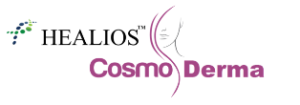What is itraconazole?
Itraconazole is an triazole medicine used to treat fungal infections.
What is itraconazole used for?
Itraconazole is effective against a broad spectrum of fungi including:
- Dermatophytes (tinea infections)
- Yeasts such as candida and malassezia infections
- Systemic fungal infections such as histoplasma, aspergillus, coccidiodomycosis, chromoblastomycosis.
Itraconazole is sometimes used for inflammatory skin diseases such as atopic eczema, seborrhoeic dermatitis or psoriasis, if a fungus or yeast is thought to be contributing to the condition.
Itraconazole has recently been observed to slow the growth of basal cell carcinoma, and is occasionally used for this purpose off-label
How does itracoanzole work?
Itraconazole binds to the fungal p450 enzymes and stops the cells making ergosterol, the main component of the cell wall.
How is itraconazole taken?
The medication is better absorbed orally when it is taken with a fatty meal or acidic drink (eg, orange juice). It is bound to proteins such as albumin in the circulating blood and becomes concentrated in fat cells and within skin and nails. It takes one to three days for half of the medication to be cleared from the blood stream. The rest is eliminated in faeces and urine after conversion by the liver into inactive compounds.
Skin concentrations may be 3–10-fold higher than those in the blood. It may persist in the skin for up to 4 weeks after the drug has been discontinued and in the nails for up to a year.
Dose regime for itraconazole
Various regimes for itraconazole have been found successful; typical doses are listed below. Courses can be repeated and the medication can be continued for months if necessary.
- Tinea corporis, tinea cruris: 200 mg daily for one week OR 100mg daily for 2 weeks
- Tinea pedis, tinea manuum: 200 mg twice daily for one week OR 100mg daily for 2-4 weeks
- Vulvovaginal candidiasis: 200 mg twice daily for one day OR 200 mg daily for 3 days
- Oral candidiasis: 100 mg daily for two weeks
- Tinea unguium: 200 mg/day for 6-8 weeks (fingernails) or 3-4 months (toenails), OR 200 mg twice daily for 7 days, repeated monthly for 2 months (fingernails) or 3–4 months (toenails)
- Pityriasis versicolor: 200 mg/day for 10 days, with a preventative dose of 200mg once monthly for 6 months.
The dose of itraconazole in children is usually 5 mg per kg body weight per day to maximum 200 mg per day, but is reserved for exceptional circumstances.
Side effects of itraconazole
Itraconazole appears to be a relatively safe drug. Side effects, usually minor, are more likely during a prolonged course of treatment.
- Nausea and vomiting (5%)
- Constipation
- Headache
- Dizziness
- Abnormal liver function tests (up to 5% for those on long term therapy, 2% for pulse therapy); significant liver disease is rare
- Allergic skin rash including urticaria
- Endocrine effects including enlarged breasts (in males) and adrenal suppression
- Tingling in the fingers and toes (very rare)
- Congestive heart failure: itraconazole should be used with caution in those with heart problems.
Itraconazole is best avoided in pregnancy. Although only excreted in tiny amounts from breast milk, it should only be taken by a breast-feeding mother if essential.
Drug interactions with itraconazole
Itraconazole has important interactions with other medications.
As itraconazole needs acid for its absorption, antacids, H2 antagonists (cimetidine, famotidine, ranitidine) and omeprazole should not be taken for 2 hours after itraconazole.
Itraconazole is a P-glycoprotein inhibitor and increases the concentration of some drugs.
These drugs should not be taken by those on itraconazole:
- HMG Co-A reductase inhibitors (atorvastatin, lovastatin, simvastatin); fluvastatin, rosuvastatin and pravastatin are acceptable alternatives. Toxicity due to the combination of drugs results in muscle pain and weakness, which may be serious.
- Cisapride
- Midazolam, triazolam
Itraconazole may increase the risk of bleeding from anticoagulants such as warfarin or dabigatran.
The dose of these drugs should be reduced:
- Warfarin
- Digoxin
- Methyl prednisolone
- Ciclosporin
- Tacrolimus
- Vinca alkaloids
The dose of these drugs may need reducing if side effects arise:
- Quinidine
- Calcium channel blockers
- Antidiabetic sulphonylurea medication (tolbutamide, glibenclamide, gliclazide, glipizide)
The following drugs decrease the concentration of itraconazole:
- Rifampicin
- Isoniazid
- Phenytoin
- Carbamazepine
Itraconazole is not thought to interact with the oral contraceptive pill.

 099006 19622
099006 19622



 Join Us On Facebook
Join Us On Facebook Join Us On Twitter
Join Us On Twitter Join Us On In.com
Join Us On In.com Subscribe to Our Blog
Subscribe to Our Blog